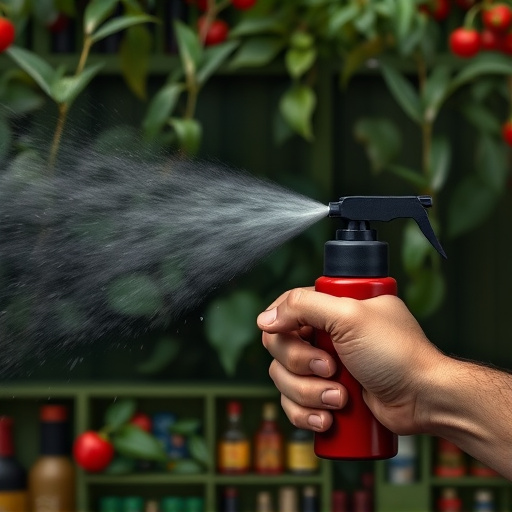Self-defense inflammatory spray devices like pepper spray or oleoresin capsicum (OC) spray temporarily disable attackers by releasing capsaicin into their eyes and respiratory system. The effective 'Spray and Move' technique involves aiming for the face and eyes, swift deployment, and creating distance. Regular training is vital to maximize effectiveness, understand spray range, and minimize risks. Legal consultation is crucial to ensure compliance and safe deployment practices, protecting oneself, bystanders, and property.
“Uncover the power of self-defense with an innovative tool—the inflammatory spray device. This compact yet potent weapon is designed to deter and incapacitate attackers, offering individuals a vital layer of personal safety. In this comprehensive guide, we’ll explore the fundamentals of these devices, delve into effective spray and move deployment techniques, and navigate the legal considerations crucial for responsible use. Get ready to empower yourself with knowledge on how to deploy inflammatory spray and ensure your safety.”
- Understanding Self-Defense Inflammatory Spray Devices: The Basics
- Effective Spray and Move Deployment Techniques
- Legal Considerations and Safety Precautions for Using Inflammatory Spray
Understanding Self-Defense Inflammatory Spray Devices: The Basics
Self-defense inflammatory spray devices, also known as pepper spray or oleoresin capsicum (OC) spray, are powerful tools designed to disable an attacker temporarily and allow users to escape. These devices operate by releasing a fine mist of capsaicin, the chemical compound responsible for the heat sensation in chili peppers. When sprayed into the eyes and respiratory system, capsaicin causes intense irritation, leading to temporary blindness, coughing, and difficulty breathing.
Understanding how these devices work is crucial when it comes to effective deployment. The basic operation involves a simple spray and move technique. Users should aim for the face and eyes of the assailant, releasing the contents of the canister in a swift and controlled manner. Once sprayed, individuals should immediately create distance and move away from the attacker to ensure safety. Proper training in spray and move deployment techniques is essential to maximize effectiveness and minimize risks associated with using self-defense inflammatory spray devices.
Effective Spray and Move Deployment Techniques
When using a self-defense inflammatory spray device, employing effective Spray and Move Deployment Techniques is crucial for maximizing its impact. The key strategy here is to spray while retreating or moving away from the assailant. This allows you to create distance, disrupt the attacker’s momentum, and provide yourself with a clear escape route. A quick burst of the spray, followed by a swift retreat, can effectively deter an attacker and give you time to get to safety.
These techniques require practice to perfect. Users should familiarize themselves with the spray range, wind conditions, and optimal spraying angles. Additionally, regular training in defensive maneuvers will ensure that when faced with an actual threat, you react instinctively and move efficiently, making your self-defense strategy a powerful game-changer.
Legal Considerations and Safety Precautions for Using Inflammatory Spray
When considering self-defense with inflammatory spray, it’s crucial to understand the legal implications and safety protocols involved. Each jurisdiction has specific regulations regarding the use of such devices, so understanding local laws is essential before purchasing or carrying an inflammatory spray. It’s recommended to consult legal experts to ensure compliance with existing rules and avoid potential charges related to unlawful use or misuse.
Safety precautions are paramount when employing spray and move deployment techniques. Users must be trained in proper handling and application to minimize risks of harm to themselves, bystanders, and property. Regular maintenance and inspection of the device are vital to guarantee its functionality during emergency situations. Additionally, being aware of wind conditions and aiming carefully can prevent unintended targets or off-target effects, ensuring safety is prioritized while utilizing this self-defense tool.
Self-defense inflammatory spray devices, when used responsibly and in accordance with legal guidelines, can be powerful tools for personal safety. Understanding the basics, mastering effective spray and move deployment techniques, and adhering to safety precautions are essential to ensure their efficacy. By staying informed about legal considerations, individuals can protect themselves while navigating potential threats, making these devices a valuable addition to personal safety strategies.
